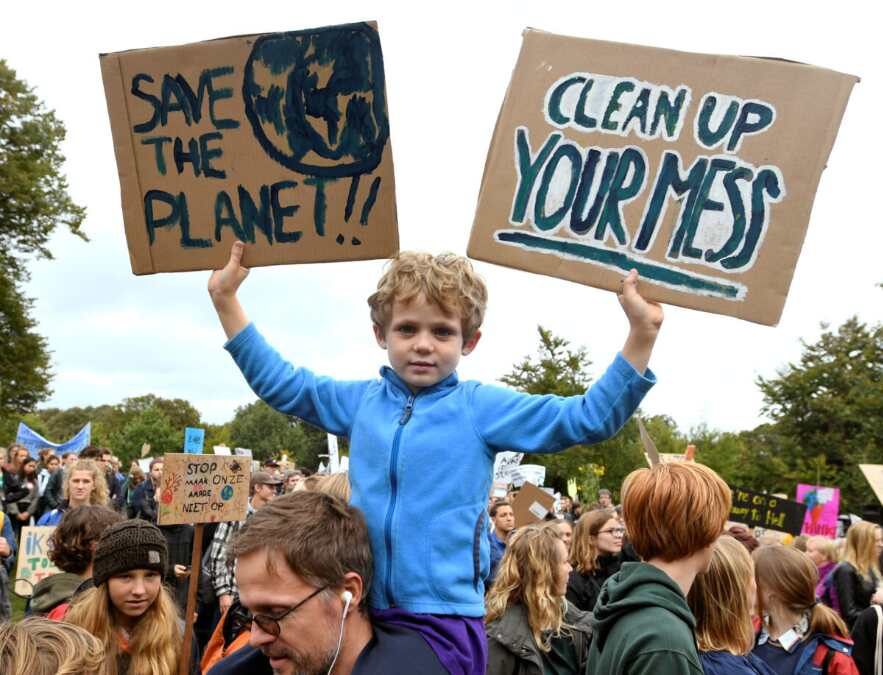Fighting crisis through literacy
Young minds will have to be empowered through climate education if we are to mitigate the crisis unfolding before our eyes

Education is a critical agent for addressing the issue of climate change as it encourages people to change their attitude and behaviour, and empowers them to take action. Young people can be taught about the impact of global warming and the ways to adapt to climate change. I've made regular interactions with school-level students, particularly in rural areas, to assess how much they know about climate change — what causes it, what are its consequences and what can be done to stop it? I observed that all the students were aware about the genuine problem of climate change but they failed to give evidence-based scientific explanations of the causes of climate change. For their better understanding, I explained the causes of global warming through graphs relating to melting ice, rising carbon emissions and global warming's effect on humans.
The atmosphere allows most of the visible light from the sun to pass through and reach the Earth's surface. As the surface is heated by sunlight, it radiates part of this energy back toward space in the form of infrared radiation. This radiation is absorbed by the greenhouse gases in the atmosphere, raising the temperature. The heated atmosphere, in turn, radiates infrared radiation back towards Earth's surface. This phenomenon is intensified by the emission of greenhouse gases into the atmosphere. From the beginning of the Industrial Revolution to the end of the 20th century, the amount of carbon dioxide in the atmosphere increased by roughly 30 per cent and the amount of methane more than doubled. Rapid industrialisation is spewing pollutants and greenhouse gases, especially CO2, into the atmosphere, leading to depletion of ozone layer as well as causing greenhouse effect which would result in global warming and climate-driven disasters. Carbon emission is caused due to two factors — the need for development, and the quest for a luxurious lifestyle. Our destructive activities are pushing the earth towards 6th mass extinction.
The main cause of global warming is the surge in unsustainable human activities. Population is growing exponentially, so is their need for food and shelter for which massive deforestation — either for agriculture or for urbanisation — is taking place in addition to over exploitation of natural resources. This global warming ultimately changes the Earth's climate, leading to large tracts of forests being gutted into fire, lands being flooded with water and the villages devastated by cyclones and hurricanes. Climate change is affecting food production and causing severe water stress. It is pushing humanity towards poverty and hunger, forcing people to migrate to escape the extreme climatic disasters. In this context, it is pertinent to mention that despite many COPs, the global climate did not show positive signs. No country has adopted the recommendations in totality, though they all agree to follow these in principle. As a result, global temperature is on the rise despite several climate conferences, glaciers across the world have been melting and the rate seems to have doubled in the last two decades. Natural resources are being exploited to fulfil the greed of humans and maintain their luxurious lifestyle.
The main objective should be to impart basic understanding of climate change to students and make them understand what choices would lead to a bad future or a better future. I believe it is an educator's job to ensure that the students know what they have to do. At present, climate literacy around the world is not adequate. Students are not aware that climate change and environmental issues do not affect us all in the same way. Indigenous communities and vulnerable sectors of society receive the worst impacts of climate change. Most importantly, climate change may cause the disappearance of some species. In this piquant situation, there is an emergent need to increase 'climate literacy' among students because movement of students is not a matter of the future but a fundamental pillar of the present. Their energy must be channelled through decision-making processes. Though thousands of stories on climate change have been published over the years, many of them can be difficult for students to understand. By the end of my lectures, students filled with relevant information were more worried about climate change and realised their role in stopping the spread of the problem i.e., cutting emissions significantly and, at the same time, strengthening our forests' and the oceans' capacity to sequester carbon. To highlight the power of students, I quote 15-year-old Greta Thunberg: "If children can get headlines all over the world just by not going to school, then imagine what we could all do together if we really wanted to".
Finally, it may be mentioned that carbon literacy, lifecycle and impact of materials, finite nature of resources, and pollution are the most important topics for all the students to learn about by the time they leave school. When education helps students to develop a strong personal connection with climate, as well as instils a sense of personal agency and empowerment, it can have a consequential impact on students' daily behaviours and decision-making, which could reduce their overall lifetime carbon footprint.
One of the key challenges is how we actually bring all the sciences together.
The writer is a former Senior Scientist, Central Pollution Control Board. Views expressed are personal



